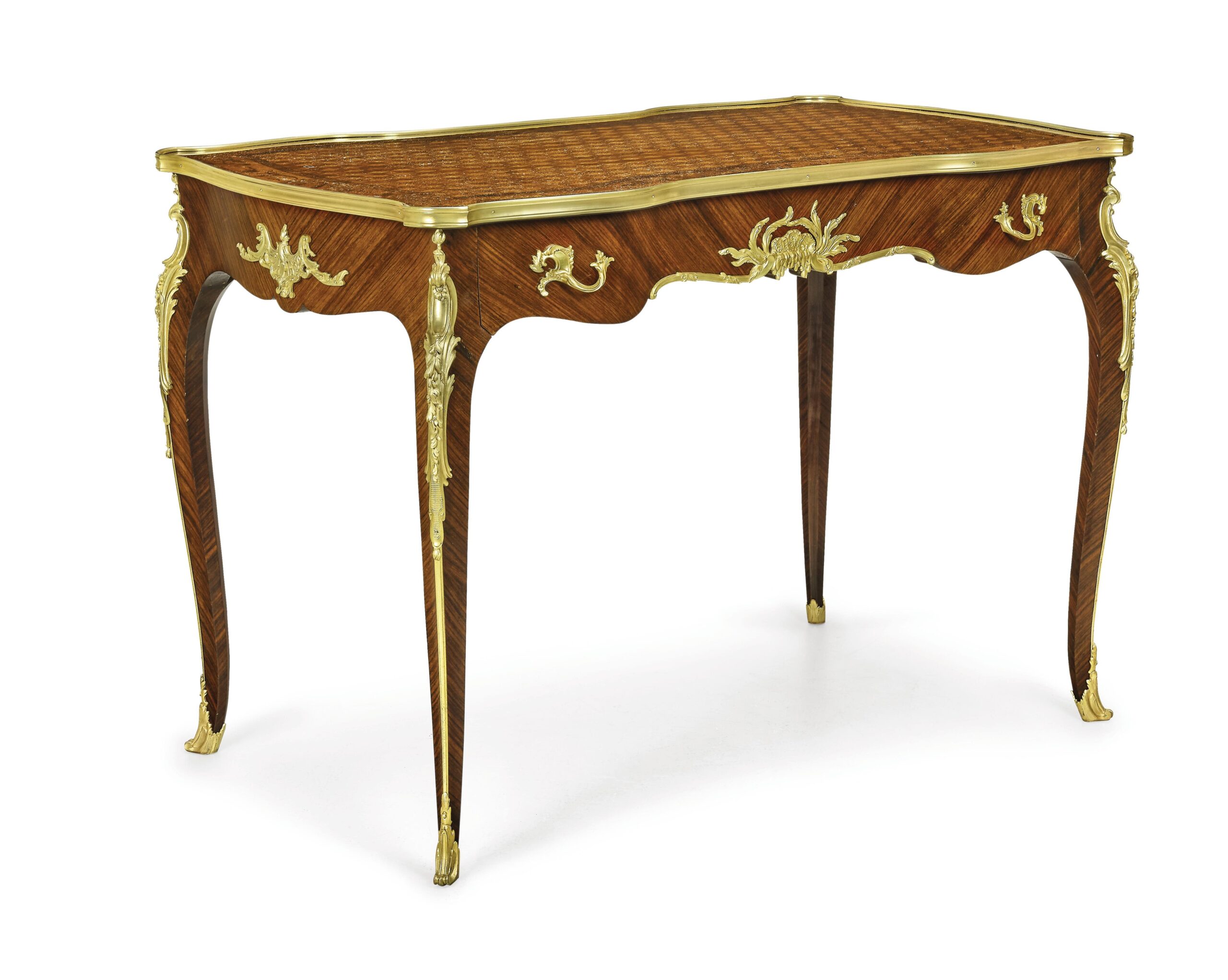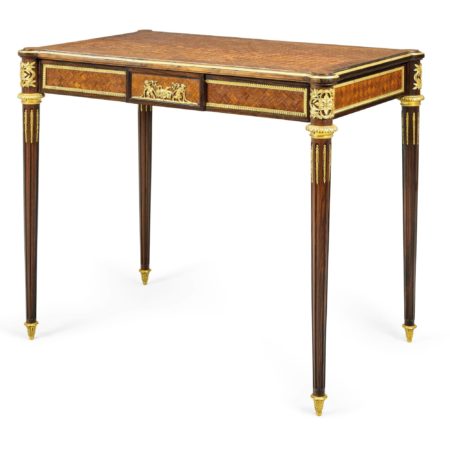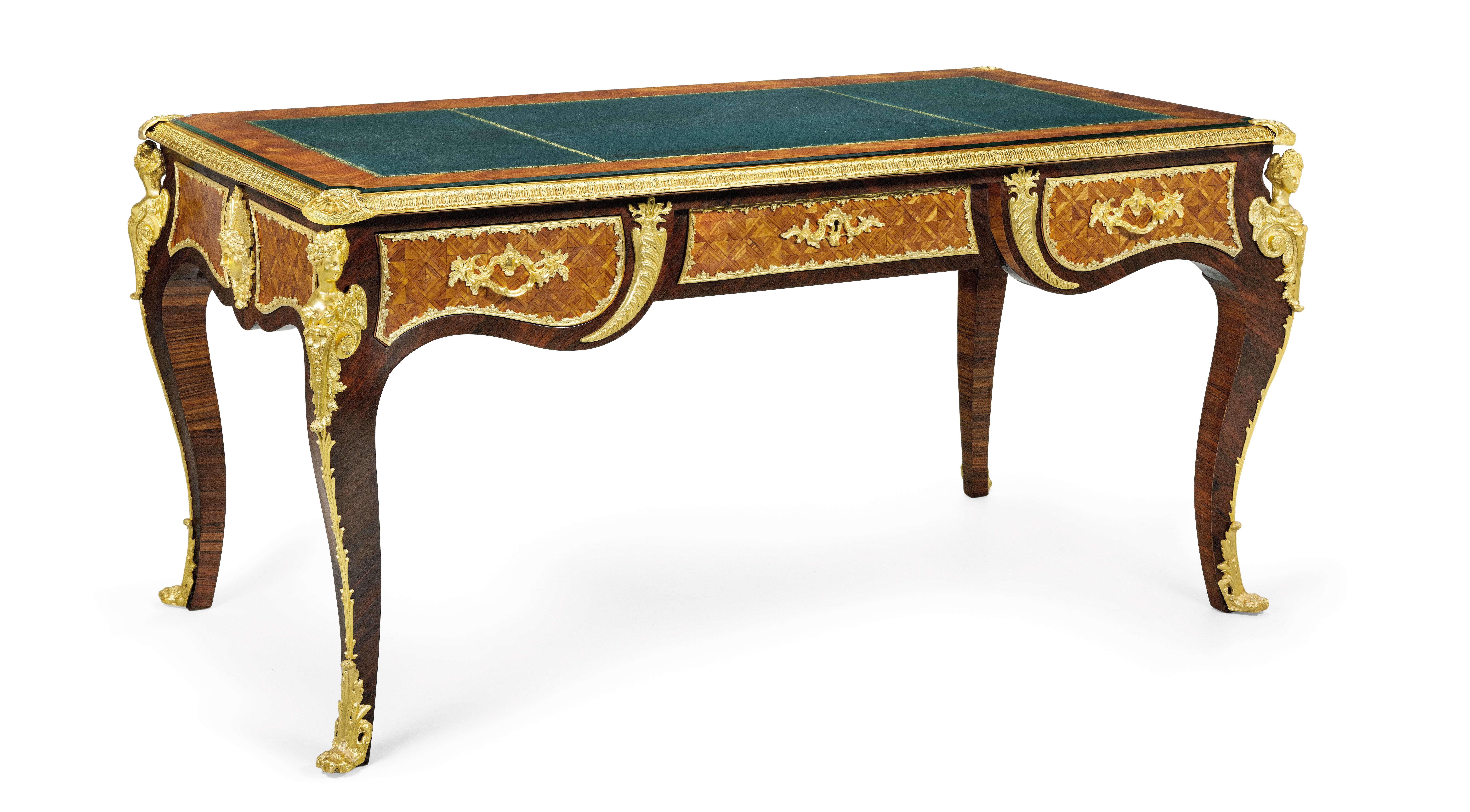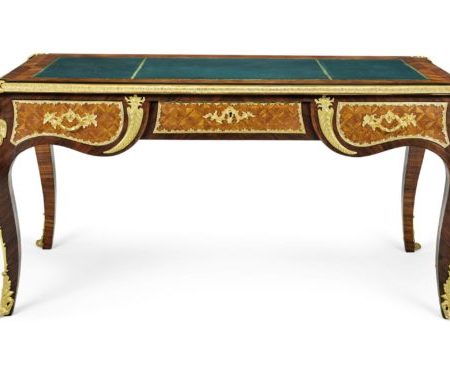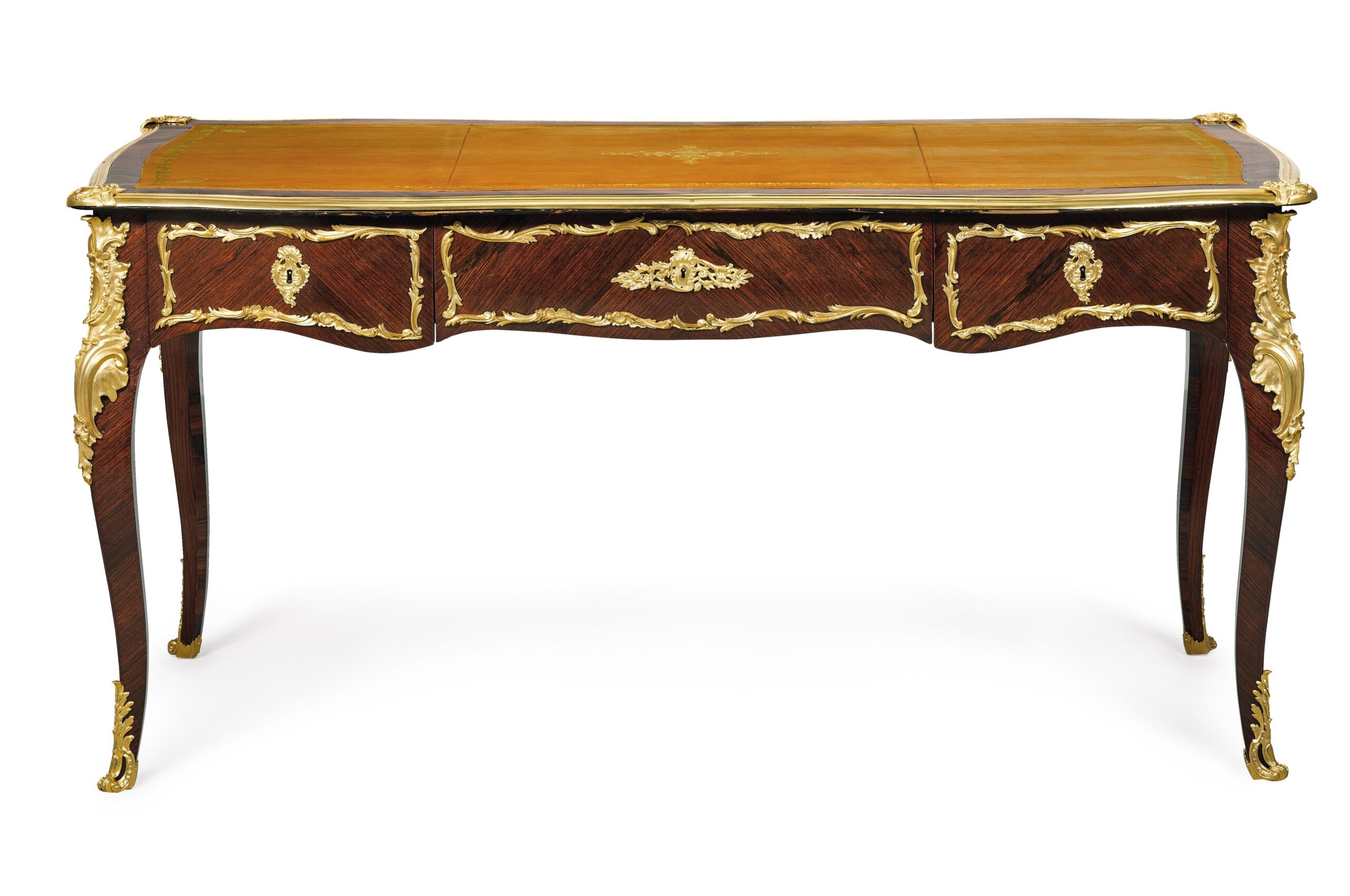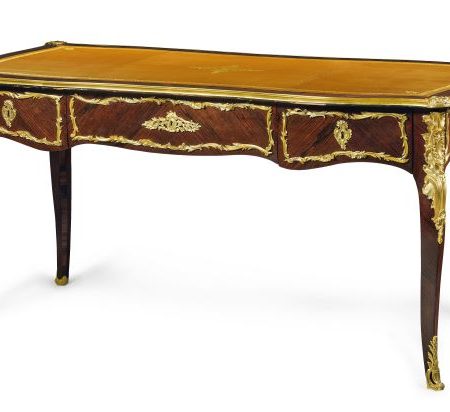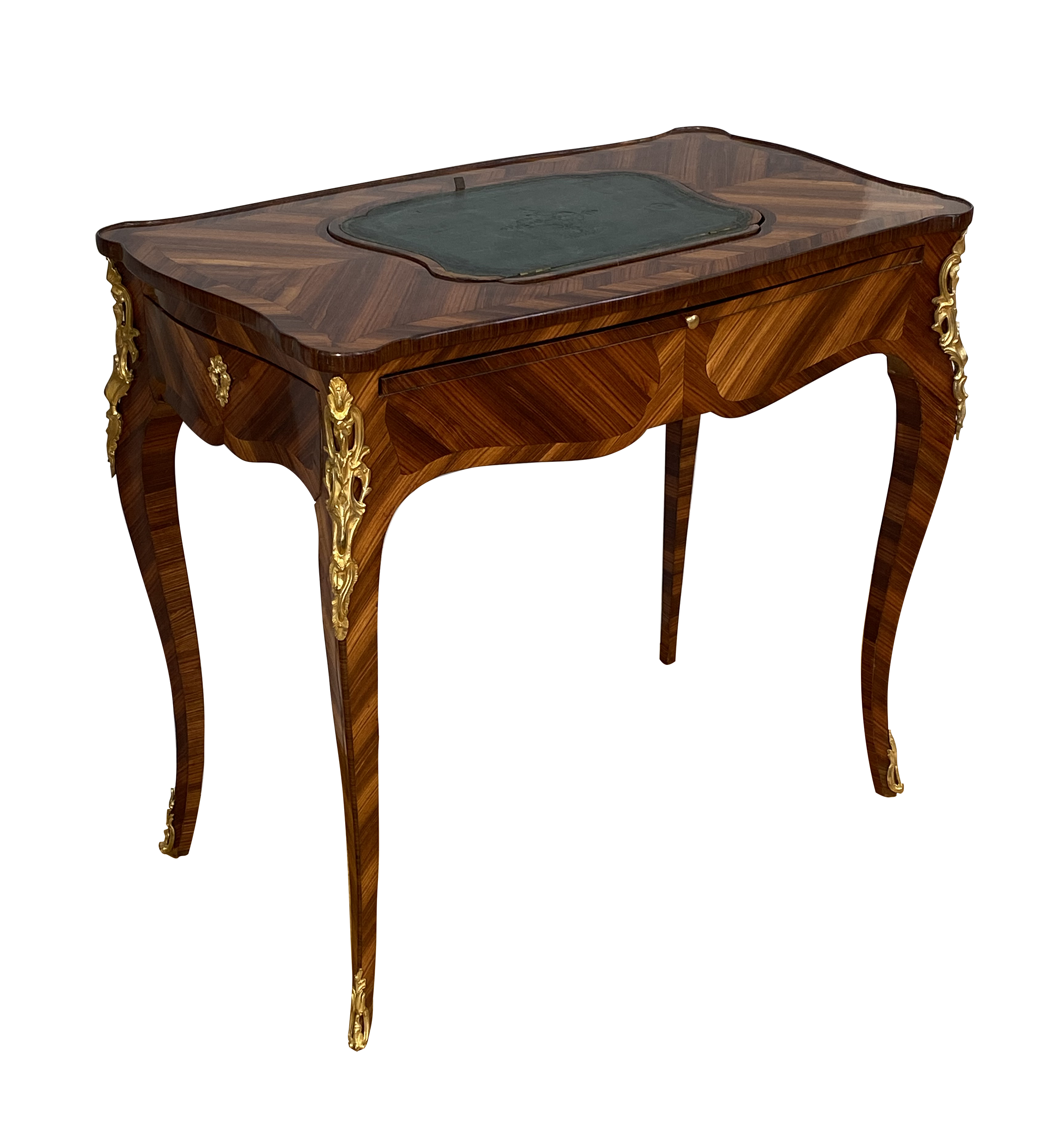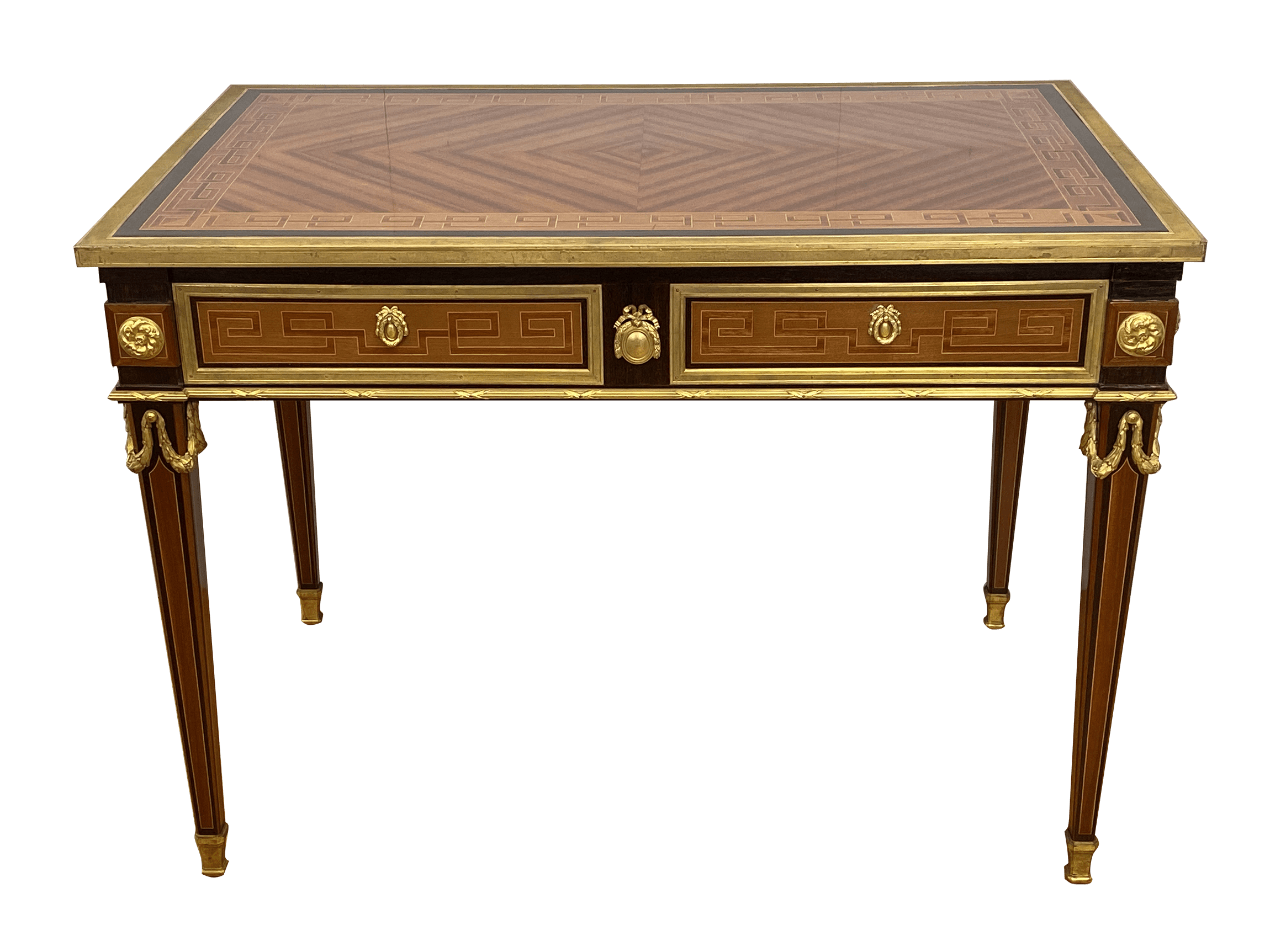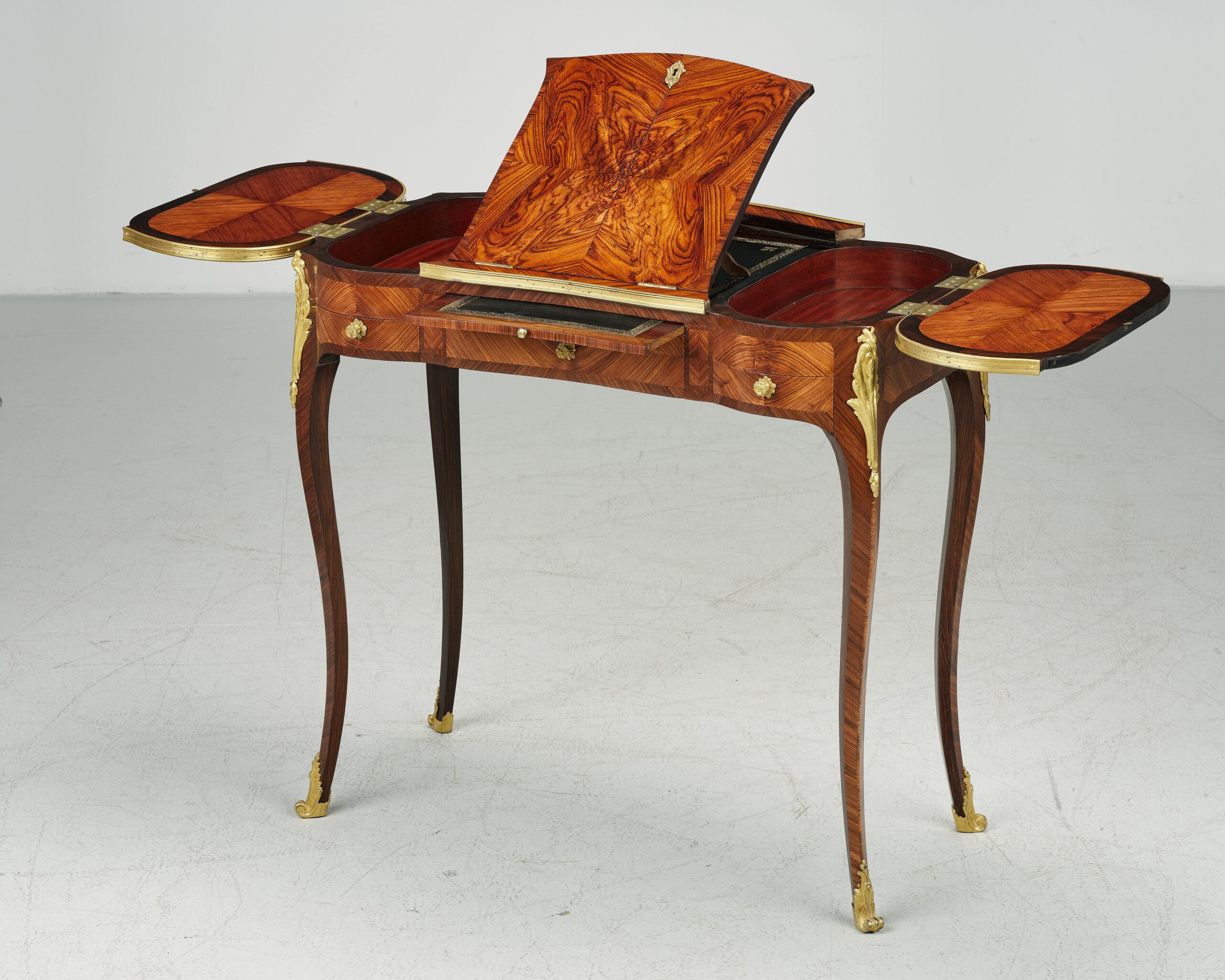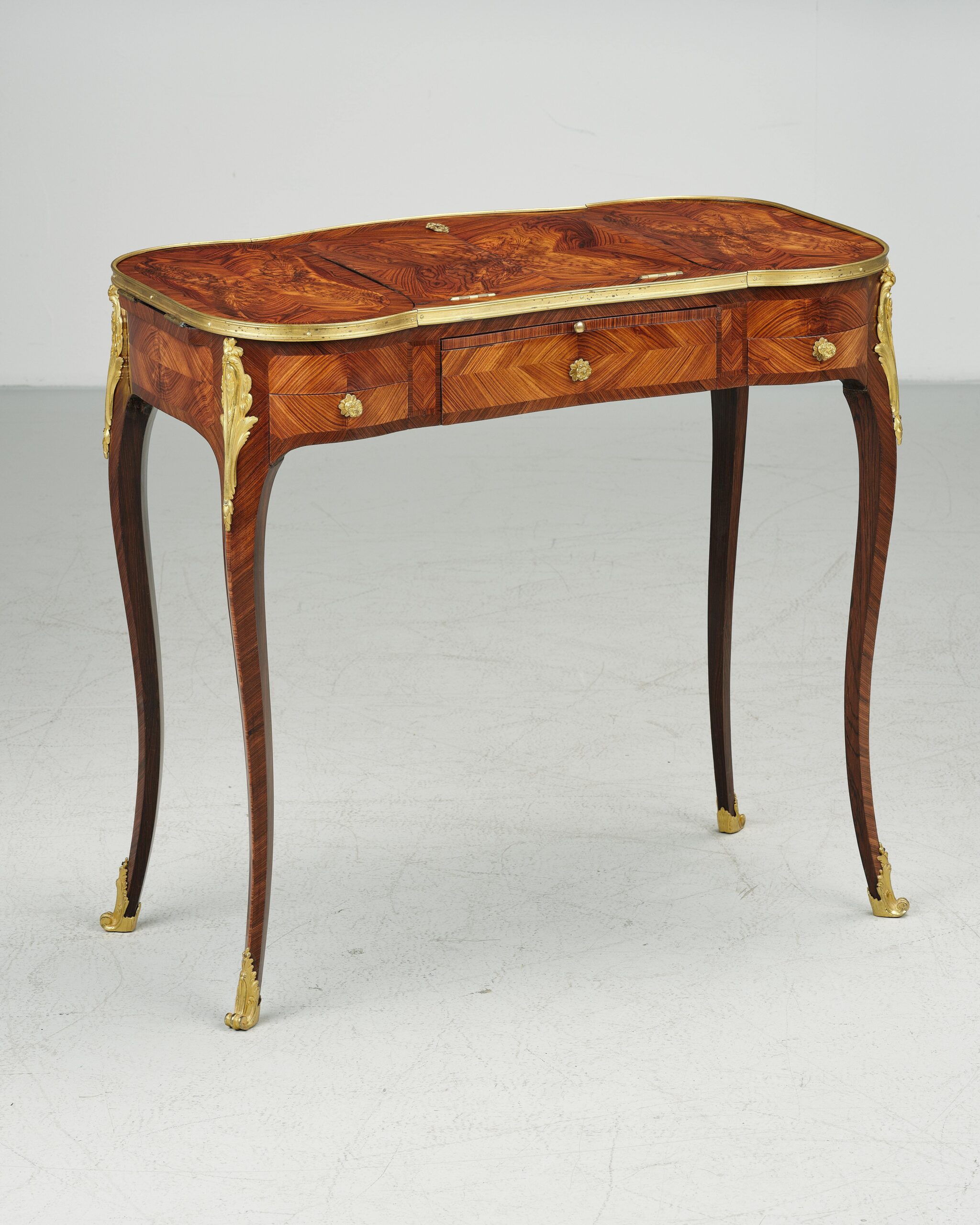Desks

 €9,000.00
€9,000.00Paris, late 19th century, elegantly curved hardwood frame, rosewood veneered, inlaid with various precious woods in the form of cubes and leaves, polished in traditional craftsmanship, one drawer, finely chiselled gilt bronze mounts, marked FL on the back and signed F. Linke on a corner bronze, panelled surround, 75.5 x 110 x 66 cm, beautifully restored condition.
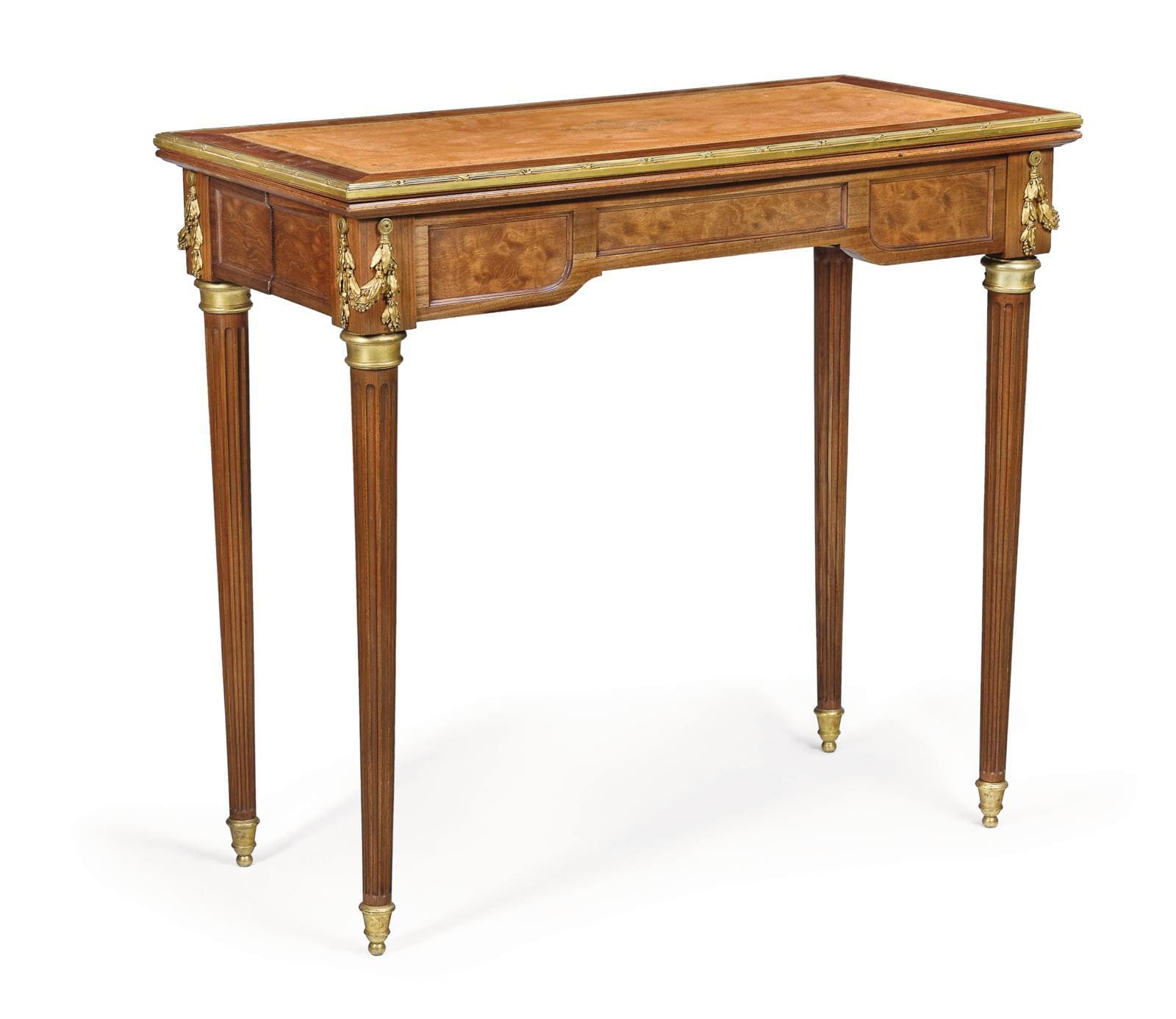
 €6,000.00
€6,000.00In the Louis XVI style, by the ebenist Paul Sormani, (1817-1877), last third of the 19th cent.
mahogany wood frame with fluted feet and finely chiselled gilt bronze fittings, gold-trimmed leather upholstery,
folding top, with internal felt covering, signed Sormani Paris on one bronze, 77 x 84 x 42/84 cm, beautiful professionally restored condition.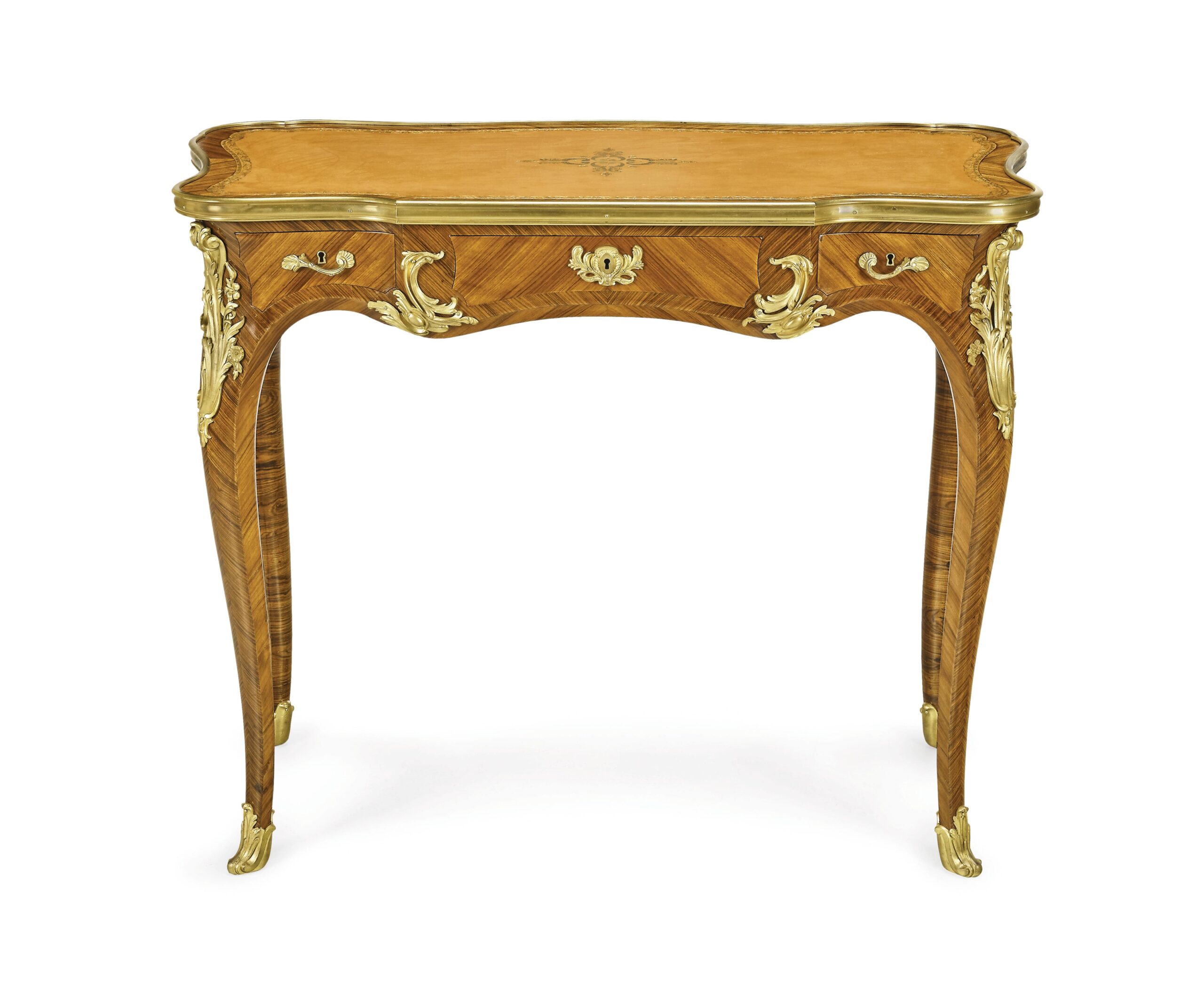
 €9,000.00
€9,000.00Paris, late 19th century, elegant curved, freestanding oak frame, rosewood veneer, polished, in form and finish exceptional, finely chiselled and gilded bronze fittings, three drawers, top with edging and gold-embossed leather covering, embossed lock, SORMANI PARIS rue Charlot, 72 x 88 x 44 cm, beautiful, well-kept general condition.
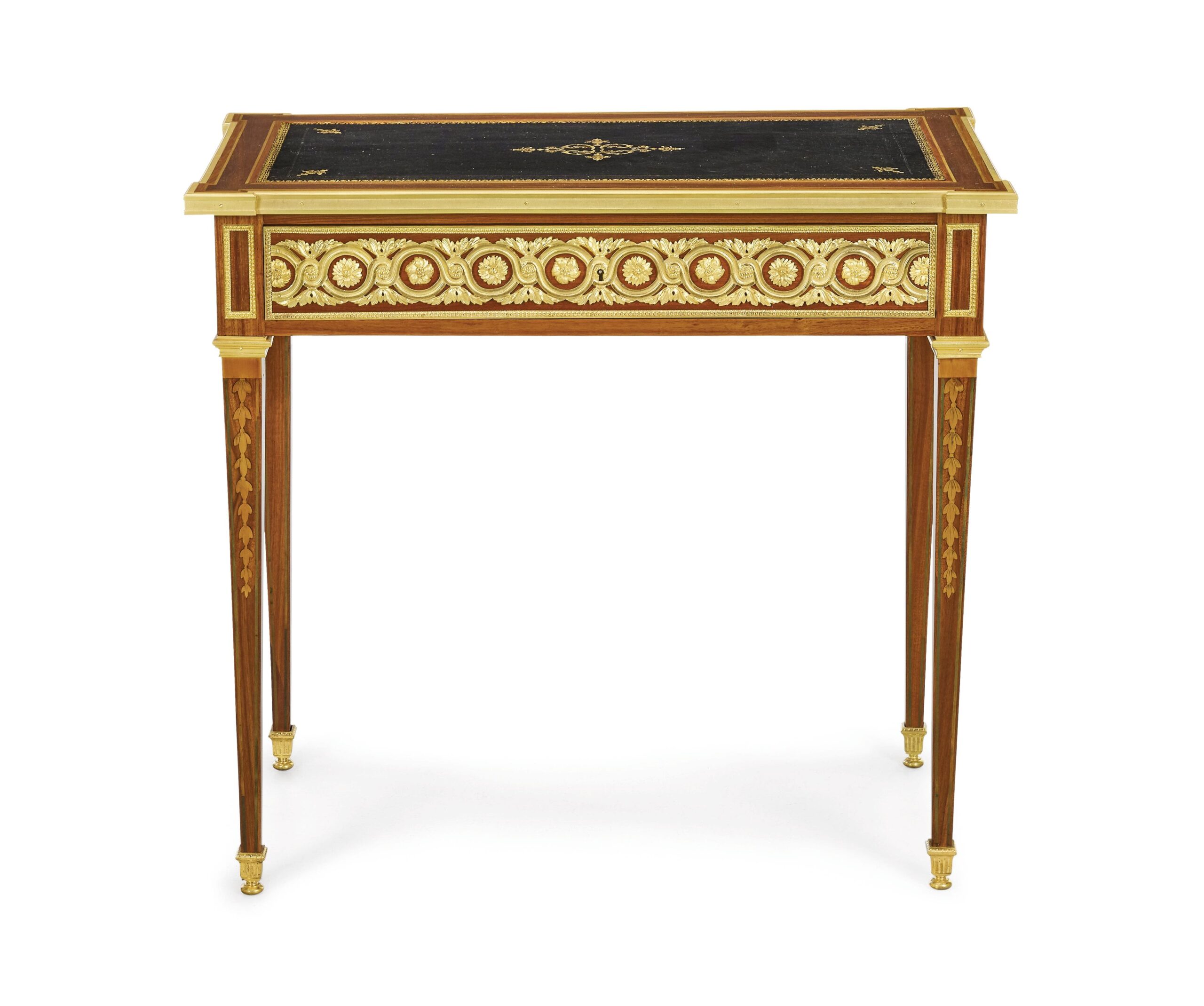
 Sold
SoldMaisson Millet, in the Louis XVI style, France, late 19th century, various hardwoods and softwoods, veneered with amaranth and rosewood veneered with amaranth and rosewood and ornamentally marquetry with various precious woods, polished using traditional craftsmanship, rich, finely chiselled and gilded bronze gilded bronze mounts and plate surround, signed “MILLET à PARIS” one drawer, the top with renewed gold-embossed leather covering, 73 x 79 x 45 cm, beautiful professionally restored condition.
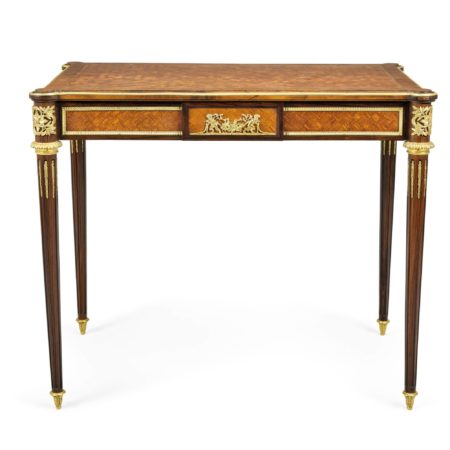
 €4,500.00
€4,500.00Louis XVI style, modelled on a piece by Jean-Henri Riesener at the end of the 19th century, Hardwood frame with turned fluted feet, rosewood veneered as well as with various precious woods. Ornamental marquetry, one drawer, fine gilded bronze ornamental fittings and top panel edging. Beautiful restored condition.

 €5,600.00
€5,600.00So-called. Bureau Plat, in the Louis XV style. Second half of the 19th century. Curved free-standing oak frame, rosewood veneered, polished, richly decorated with gilded chiselled bronze fittings. Three drawers, top with border and renewed, punched as well as gold decorated leather upholstery. Dimensions: 81 x 159 x 79 cm. Condition: beautiful, expertly restored condition. Subject to species protection

 €6,800.00
€6,800.00Philippe Claude MONTIGNY (after a model by) – Superb small desk in Louis XVI style, 2 h. of the XIX century. Oak frame with conical feet, freestanding version. 2 front drawers with central lock. Veneered with satinwood and ornamentally and field-marked with amaranth and various precious woods. Masterfully executed edging flush with the surface of the panel. Quality chiselled, gilded bronze fittings. Dimensions: 75,5 x 105 x 65 cm. Condition: Beautiful, well-maintained, polished original condition with very slight signs of use.

 €3,000.00
€3,000.00So-called “Liseuse”, Louis XV style, second half of the 19th century, elegantly curved oak frame, rosewood veneered, field-marked, polished.
Three drawers, pull-out shelf with leather cover leather covering, three-part hinged top with border, gilt bronze fittings, 74 x 80 x 44 cm, beautiful restored condition.
Desks
Until the XVII century, people used either simple tables with drawers or standing desks with a bevelled top and recesses for writing utensils for writing.
The first “real” desks originated in Italy, France and the Netherlands. They were much smaller than dining tables and had one or two drawers. They were simple, practical pieces of furniture without artistic pretensions.
It was not until the era of the “Sun King” Louis XIV that truly magnificent desks began to be built. The most famous model was the “Bureau Mazarin”, on 8 legs connected by crossbars, with rich inlays and decorated with bronze fittings. The desk became an important piece of representative furniture and a status symbol for high dignitaries.
In the Regence era, desks had only 4, albeit curved legs, numerous bronze Doré fittings and several drawers. Under Louis XV, the marked writing surface was replaced by a leather base decorated with gold embossing. Ladies were also given special, small desks to deal with their correspondence.
With the advent of early classicism under Louis XVI, desks (bureau plat) became rectilinear but no less sumptuous.
Even in the XIX century, desks have not lost their representative character and often served as a status symbol.


